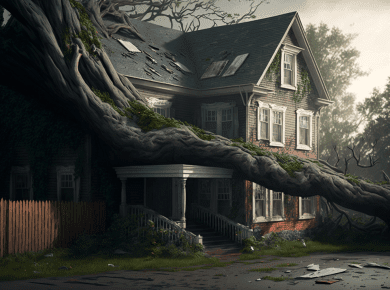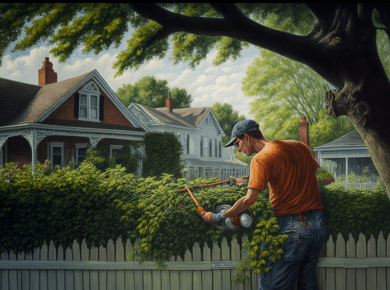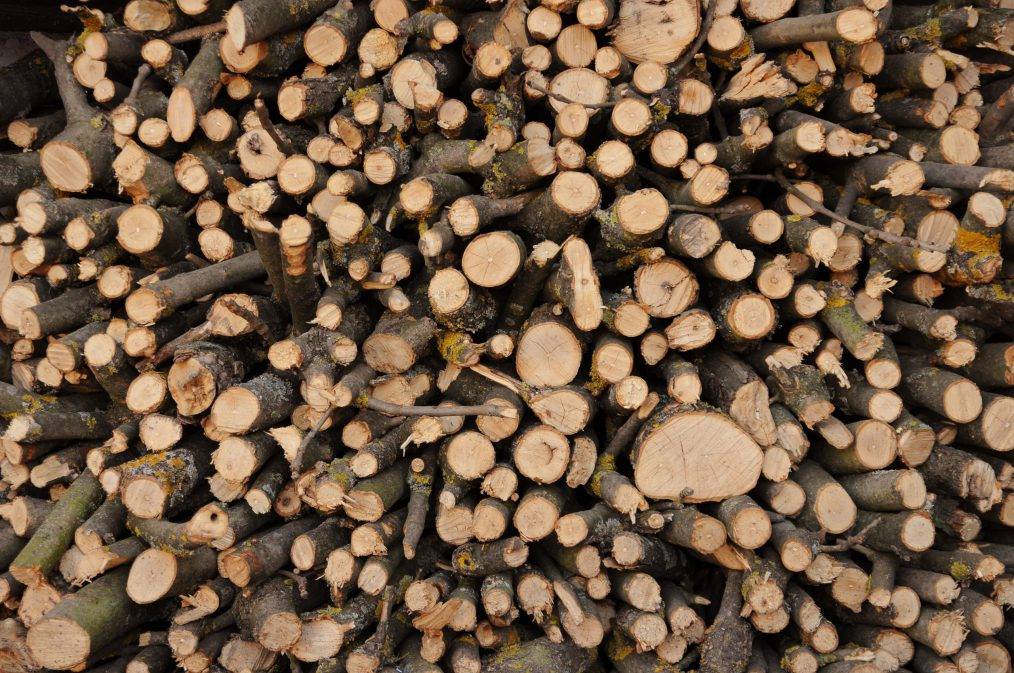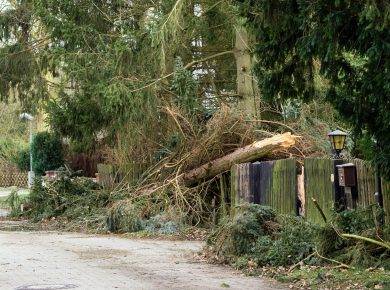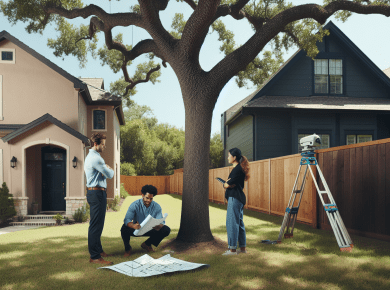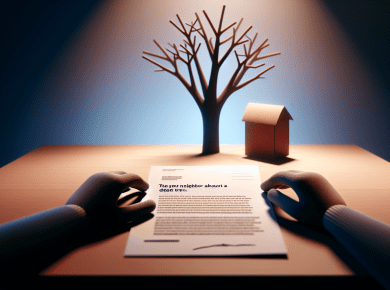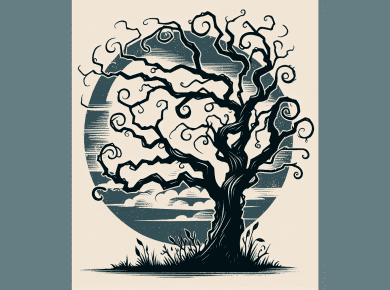Understanding Tree Ownership
A clear understanding of tree ownership and the associated legal responsibilities is essential when navigating neighborly relations, especially regarding trees that may encroach on property lines.
Legal Responsibilities of Tree Owners
Tree owners carry a legal duty of care regarding their trees to ensure that they do not pose a danger to neighbors or their property. If a tree is deemed potentially hazardous, it is the owner’s responsibility to arrange for its removal or pruning to prevent harm. In the event of damage or injury caused by a neglected tree, the owner may be held liable.
| Responsibility | Description |
|---|---|
| Duty of Care | Ensure trees are safe and well-maintained |
| Removal or Pruning | Act on potentially dangerous trees |
| Liability | Responsible for injuries or damages caused by trees |
Ownership of Boundary Trees
The classification of trees plays a significant role in establishing ownership rights. If a tree’s trunk stands entirely on one person’s property, it is legally owned by that individual. However, if the trunk lies on the property line of two or more owners, the tree is considered a boundary tree and is owned jointly by all adjacent property owners. This distinction is crucial when disputes arise concerning the trimming or removal of trees.
It is important to note that property owners are entitled to trim tree branches that extend to their property line. However, this must be done without entering the neighbor’s property or causing harm to the tree itself. Any interference leading to injury may result in penalties or compensation claims.
For more insights into neighbor disputes and potential actions, check out our articles on who is responsible for cutting overhanging tree branches and can you sue someone for cutting down trees on your property. Understanding these legal frameworks can aid homeowners in drafting a tree trimming request letter to neighbor when necessary.
Rights and Obligations
Understanding the rights and obligations related to tree management is crucial for maintaining neighborly relations and avoiding disputes. This section addresses the property owner’s right to trim trees and the complexities surrounding neighbor disputes over tree roots.
Property Owner’s Right to Trim Trees
Property owners have the legal right to trim tree branches that encroach upon their property, extending up to the property line. However, it’s important to note that they cannot trespass onto a neighbor’s property or cause intentional harm to the tree itself. Engaging in such actions may lead to legal penalties.
| Action | Legal Standing |
|---|---|
| Trim branches up to property line | Permitted |
| Enter neighbor’s property without permission | Prohibited |
| Intentionally injure the tree | Prohibited, may result in penalties |
For effective communication about trimming trees, a tree trimming request letter to a neighbor can help facilitate discussion and maintain harmony.
Neighbor Disputes Over Tree Roots
Disputes involving tree roots can vary significantly based on state laws. Some states allow neighboring property owners to sue over tree root damage, while others provide the right to trim roots that extend into a property. These legal distinctions can complicate neighborly relationships.
| State Law Consideration | Allowance |
|---|---|
| Sue for root damage | Allowed in some states |
| Trim roots encroaching property | Allowed in most states |
In cases where disputes arise, proactive communication and an understanding of local laws can aid in resolving issues. Neighbors may want to refer to related resources, such as who is responsible for cutting overhanging tree branches or understand the legal avenues for addressing tree damage through can you sue someone for cutting down trees on your property.
Dealing with Tree Issues
Addressing tree-related concerns can sometimes require outside assistance, particularly when neighbor disputes arise. City governments and other authorities play a significant role in managing these issues, especially regarding public safety and property damage.
City Government Interventions
City governments often intervene in situations involving dangerous trees on private property. Many municipalities have ordinances in place requiring property owners to remove hazardous trees. Failure to comply can result in fines or other penalties. Additionally, utility companies may also get involved, trimming trees that threaten their infrastructure or equipment.
| Intervention Type | Description | Potential Consequences |
|---|---|---|
| City Government Intervention | Enforcement of tree removal ordinances | Fines for non-compliance |
| Utility Company Intervention | Trimming trees near power lines | Service disruptions, fines |
Homeowners should be aware of local regulations regarding tree management. In some cases, reporting a hazardous tree to the city could prompt a swift resolution, ensuring both safety and compliance.
When a neighbor cuts down, removes, or damages a tree without permission, they are typically required to compensate the tree’s owner for the harm done. This compensation usually reflects the value of the tree based on factors like its species, size, and overall health. Homeowners who find themselves in such situations may consider legal action to recover costs associated with the loss of their trees.
In order to facilitate communication regarding these matters, neighbors may find it beneficial to draft a formal letter. For guidance on how to approach this, individuals can refer to a tree trimming request letter to neighbor.
For those seeking legal advice or wondering about their rights, related topics can provide additional insights:
- Can you sue someone for cutting down trees on your property?
- What to do if a neighbor cuts down trees on your property
Taking proactive steps to understand local laws and engaging in respectful communication can help resolve tree-related issues amicably while protecting individual rights and property.
Prescriptive Easement
Navigating issues related to trees and property can sometimes lead to the need for legal remedies such as a prescriptive easement. Understanding how to acquire one, along with the specific legal requirements pertaining to it, is critical for neighbors encountering tree-related disputes.
Acquiring a Prescriptive Easement
A prescriptive easement allows a person to use another’s property after meeting certain legal conditions. For individuals dealing with tree issues, this can apply to situations where a neighbor uses a path or area regularly without permission. The legal requirements often involve:
- Actual Use: The party must have used the property in question for a specific purpose.
- Visible and Apparent Use: The use must be open and obvious, allowing the property owner to notice the activity.
- Continuous and Uninterrupted Use: The use must occur without interruption for a defined period. In Pennsylvania, this is typically 21 years.
- Use Without Permission: The individual must have used the property without the landowner’s consent.
This process serves as a legal safeguard for neighbors who may need access across someone else’s land, especially when dealing with tree-related issues.
Legal Requirements in Pennsylvania
In Pennsylvania, the legal framework for acquiring a prescriptive easement includes specific stipulations. Here are the key requirements:
| Requirement | Description |
|---|---|
| Duration of Use | Continuous use for 21 years, demonstrating long-term reliance. |
| Open and Notorious | The use of the property must be visible and not hidden. |
| Adverse Use | The use must be without permission from the landowner. |
| Consistency | The use must be regular over the time period. |
It is crucial for neighbors to be aware of these criteria before pursuing a prescriptive easement claim. For any disputes arising around tree trimming or property damage, the guidelines highlight the importance of clear communication. Consider writing a tree trimming request letter to neighbor to open the dialogue about property boundaries and responsibilities.
Understanding these legal expectations can help ensure that relationships remain amicable and that issues with tree management are handled effectively. For cases where disputes escalate, neighbors may want to explore legal avenues, which could lead to questions such as can you sue someone for cutting down trees on your property or other relevant actions.
Maintaining Good Neighbor Relations
Building and maintaining good relations with neighbors is essential, particularly when it comes to yard care. Following certain etiquette guidelines can prevent misunderstandings and foster a friendly atmosphere.
Yard Etiquette Guidelines
To maintain harmony, neighbors should regularly prune their trees, shrubs, and vines to prevent encroachment into adjacent properties. It is also prudent to remove any damaged or diseased branches, especially before storms, to minimize the risk of damage to neighboring yards.
| Task | Recommended Action |
|---|---|
| Pruning Plants | Trim to prevent encroachment |
| Storm Preparations | Remove damaged branches |
| Yard Cleanliness | Regularly tidy up toys and equipment |
Maintaining a tidy yard is important. Leaving children’s toys or gardening tools in common areas can create a nuisance for neighbors. Regular upkeep prevents yards from appearing overgrown and messy.
During lawn maintenance, neighbors should avoid blowing grass clippings onto neighboring properties. Using a broom or leaf blower to collect clippings is respectful. If using a mower with a side discharge, aim the clippings away from neighbors’ driveways and yards.
Noise is another consideration. Avoid using noisy tools early in the morning or late at night. Starting yard work after 9 a.m. on weekends and refraining from major noisy tasks in the evening helps to maintain a peaceful environment.
When planning significant yard work that may cause disruption, communication with neighbors is not only courteous but also beneficial. Informing them in advance allows them to prepare for any potential inconveniences.
Consideration for Neighbor’s Rights
Being considerate of your neighbor’s property rights is vital. This includes understanding the boundaries concerning tree trimming and maintenance. Each property owner has a right to keep their yard in good condition without interference from others. Learning about local laws and guidelines can help avoid conflicts.
It is often necessary for neighbors to collaborate on tree and landscape care. Clear communication can aid in addressing concerns around overhanging branches or roots encroaching into the property line.
For any situations arising from disputes or misunderstandings, having a clear understanding of who is responsible for cutting overhanging tree branches can provide clarity. If issues persist, neighbors should refer to legal recourses, such as understanding their rights through resources like can you sue someone for cutting down trees on your property.
By adhering to yard etiquette and considering each other’s rights, neighbors can cultivate a positive community atmosphere, reducing potential conflicts related to property and trees.

